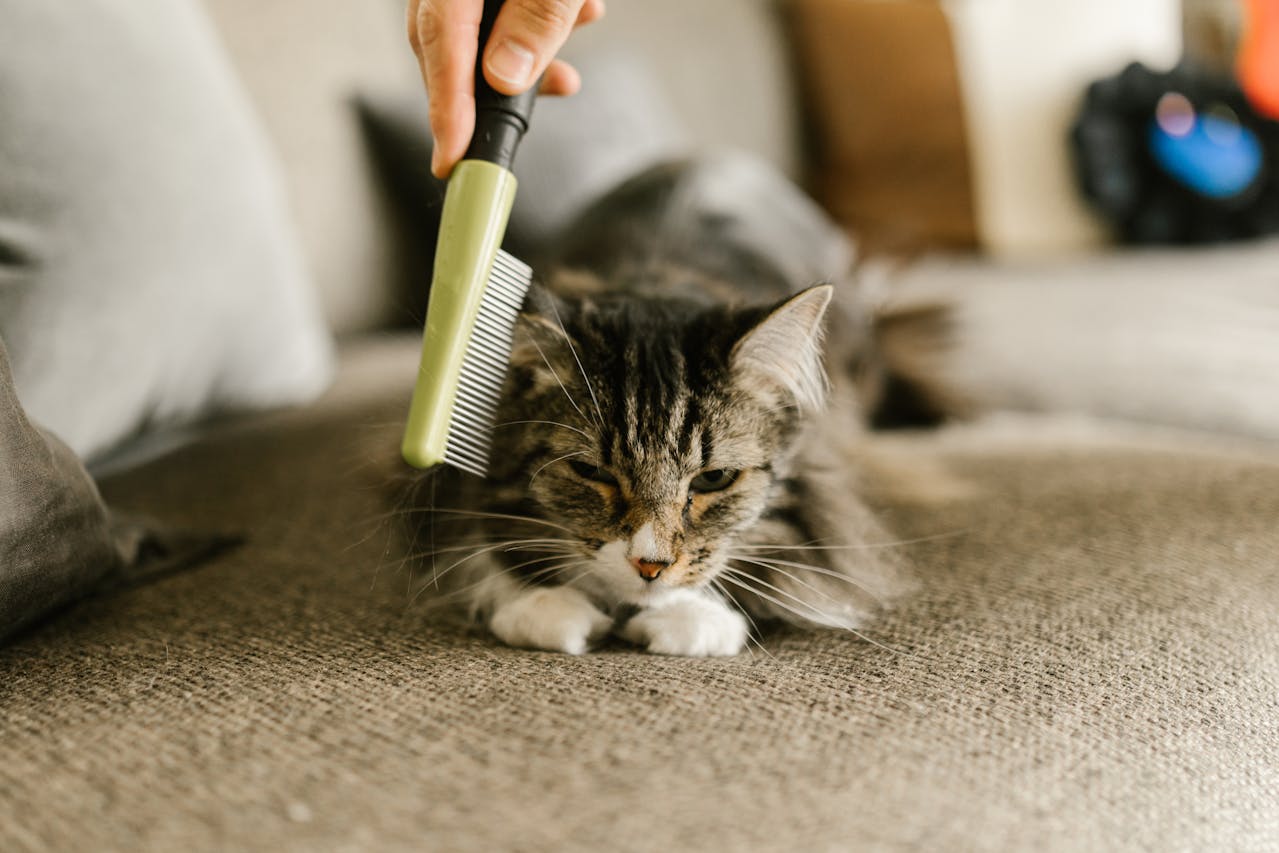Cats
Sep 2, 2024
It’s painful to imagine a wild cat that was once loved and cared for is now roaming the streets without anyone to care for it. Every day, more and more cats are abandoned by their owners exposing them to dangers outdoors.
If you encounter one, remember that feral cats are not domesticated, so you must approach them with care. You must be wondering, “Is it possible to adopt feral cats as pets?” The answer is yes!
These elusive strays can become excellent companions with the right mindset, proper knowledge, and a little TLC. But, be prepared for the road of taming a feral cat is a challenging one.
In this article, we’ll share 7 helpful tips on how to calm a feral cat and create a friendship that’ll last a lifetime.
7 Ways to Calm a Feral Cat and Earn Their Trust
Don't Force Yourself on Them

Cats are naturally cautious creatures. They always have their guard up no matter the situation. Even domestic cats are alert, especially of unfamiliar people and environments.
This wariness is amplified with feral cats. As many of them have lost trust in humans, it’ll be difficult to gain it back. Forcing yourself on them will only drive them away and make them more distrustful.
Let them come to you on their terms. And when they’re ready, make sure to give them a warm welcome.
Build Trust with Food and Treats

Since feral cats have no owners, their only option to survive is through scavenging. It might’ve been a while since they’ve had a decent meal, so use this to your advantage.
Food is one of the best strategies to tame a feral cat. They will begin to associate you with food, safety, and comfort. Get high-quality cat food and treats that shouldn’t only be tasty but healthy for them as well. Make sure that they get enough nutrition from the food you give them.
You’d also want to set a feeding schedule for the cat you’re trying to tame. Following a feeding schedule for any animal is a step to building routine and trust.
Help Them Get Used to People

A feral cat may find the everyday sounds people make to be frightening. You’ll notice that they easily get startled, even with your quiet footsteps.
If you’re trying to tame a feral cat, you’ll need to be extra careful with your actions and every sound you might make. Avoid speaking loudly and slamming doors. Instead, show that you care by making slow, cautious movements while feeding them or moving away.
You can also introduce a new person, whether a family member or friend, every few days. When you can now pet the stray cat, you can increase the number of people it encounters.
Remember to Give Them Space

Not because the feral cat seems friendly now, means that it will still be the same the next day. Cats experience mood swings when stressed or anxious, and you can expect feral cats to be exposed to stress triggers.
If you notice the cat you’re befriending to be suddenly aloof, give it space and time. All your hard work for the past few days or weeks might all go down the drain if you force yourself to interact with the stressed-out cat.
Spend Time with Them

Spend time with the cat in its new home after giving it some time to adjust. If you want to avoid getting scratched or bitten, wear protective clothes such as a long-sleeved shirt, pants, gloves, and shoes.
Sit down and spend an hour or two with the cat to help it get used to you being around. Create a routine by interacting with it a few times a day.
Purchase cat toys such as a plush mouse or a string and feather toy. Introduce the toy gradually so they won’t see it as a threat. Once it gets acquainted with the toy, use it to get the cat to interact with you. Try new fun activities for the cat to keep it entertained and stimulated.
Be Patient

Embrace a mindset of patience and understanding; this is an essential step on how to calm a feral cat.
You might lose your temper if you don’t see results immediately. But, feral cats operate on their own timelines. Older feral cats might already have built habits from living outdoors. This makes them more cautious and difficult to tame compared to feral kittens, which are more playful and friendly.
You can’t expect to be grooming a wild cat by tomorrow after giving it some food today. The truth is that you might need to do repetitive actions up to several weeks before a feral cat can begin trusting you completely.
Welcome the Cat in Your Home

Once you feel comfortable with the feral cat around you, try inviting it inside your home. It’ll be cautious at first and it might not even try entering your home.
Don’t force the cat by picking it up and placing it inside your house. Instead, keep your door open and sit by the door. Keep yourself low to lessen the threatening feeling the cat might experience.
Once it enters your home, don’t close the door just yet. Show the feral cat that it can leave anytime it wants to continue building trust. You might need to do this a couple of times before it becomes comfortable staying in your home.
Building Trust in Turning Feral Cats as Pets
Like people and other animals, cats can have their unique qualities and personalities. You might need to do extra steps on how to calm a feral cat.
By being patient enough and giving feral cats space and time to adjust, you’ll eventually gain their trust. And once you’ve befriended a feral cat, you can shower it with love through food, treats, toys, and attention.





